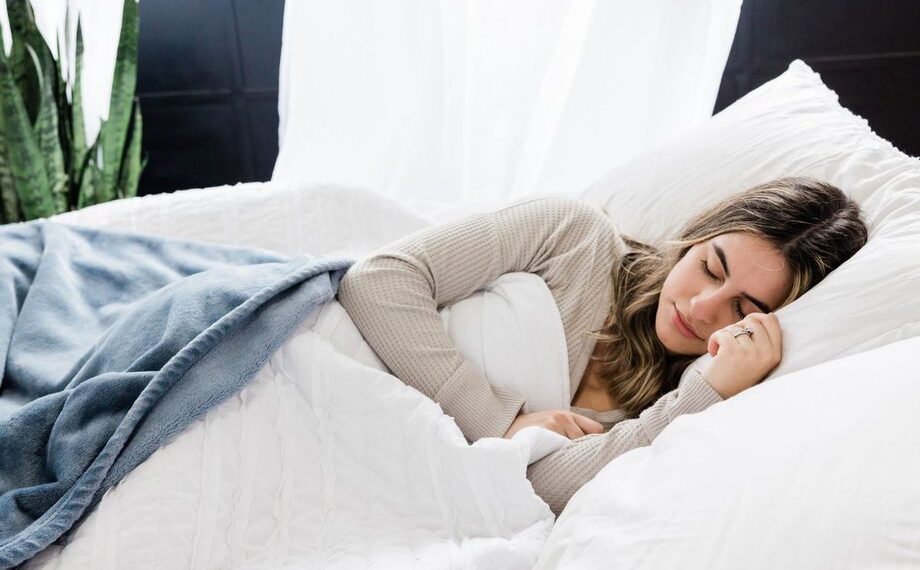Why Should You Prioritize Sleep Hygiene With Sleep Apnea?

Sleep apnea is a common sleep disorder that affects millions of individuals worldwide. It is characterized by interrupted breathing during sleep, leading to poor sleep quality and a range of negative health consequences.
Prioritizing sleep hygiene is crucial for individuals with sleep apnea to manage their condition effectively and improve their overall well-being. Sleep hygiene refers to the practices and habits that promote good sleep quality and quantity.
This article explores the importance of sleep hygiene for individuals with sleep apnea and provides practical tips for establishing a bedtime routine, maintaining a consistent sleep schedule, creating a comfortable sleep environment, managing stress and anxiety, incorporating exercise into the daily routine, and seeking professional treatment options.
By prioritizing sleep hygiene, individuals with sleep apnea can experience improved sleep quality, reduced daytime fatigue, and better overall health outcomes.
Key Takeaways
- Sleep hygiene is crucial for managing sleep apnea and improving overall well-being.
- Consistent sleep schedule regulates the body’s internal clock and improves sleep quality.
- Creating a sleep-friendly environment enhances sleep quality.
- Managing stress through relaxation techniques promotes better sleep.
Understanding Sleep Apnea
Sleep apnea is a common sleep disorder characterized by interruptions in breathing during sleep, often resulting in excessive daytime sleepiness and other negative health consequences. It is estimated that approximately 22 million Americans suffer from this condition.
Sleep apnea can be classified into three types: obstructive sleep apnea, central sleep apnea, and complex sleep apnea syndrome. Obstructive sleep apnea is the most common type and occurs when the throat muscles relax, blocking the airway. Central sleep apnea, on the other hand, is caused by a failure of the brain to send the appropriate signals to the muscles that control breathing. Complex sleep apnea syndrome is a combination of both obstructive and central sleep apnea.
Understanding the different types of sleep apnea is crucial in order to effectively manage the condition and prioritize sleep hygiene.
Importance of Sleep Hygiene
Maintaining proper sleep hygiene is crucial for individuals with sleep apnea to optimize their overall sleep quality and minimize the potential negative impact on their health. Sleep hygiene refers to a set of practices and habits that promote a good night’s sleep. For individuals with sleep apnea, following these practices becomes even more important due to the disruptive nature of the condition.
To prioritize sleep hygiene with sleep apnea, individuals should consider the following:
- Consistent sleep schedule: Going to bed and waking up at the same time every day helps regulate the body’s internal clock and promotes better sleep quality.
- Creating a sleep-friendly environment: A quiet, dark, and cool bedroom with a comfortable mattress and pillows can enhance sleep quality.
- Avoiding stimulants and substances: Limiting the intake of caffeine, nicotine, and alcohol can prevent sleep disturbances.
- Establishing a bedtime routine: Engaging in relaxing activities such as reading or taking a warm bath before bed can signal the body to prepare for sleep.
- Managing stress: Practicing stress-reducing techniques like meditation or deep breathing exercises can promote better sleep.
By prioritizing sleep hygiene, individuals with sleep apnea can improve their sleep quality, enhance their overall health, and minimize the potential negative consequences associated with the condition.
Establishing a Bedtime Routine
Establishing a consistent bedtime routine plays a crucial role in optimizing sleep quality and managing the disruptive effects of sleep apnea. A bedtime routine can help individuals with sleep apnea prepare their bodies and minds for sleep, ensuring a more restful and uninterrupted night’s rest. It involves engaging in relaxing activities, such as reading a book or taking a warm bath, before going to bed. Additionally, it is important to establish a regular sleep schedule, going to bed and waking up at the same time each day, including weekends. This helps regulate the body’s internal clock, promoting better sleep patterns. By adhering to a bedtime routine, individuals with sleep apnea can enhance their sleep hygiene and potentially reduce the severity of their symptoms.
| Benefits of Establishing a Bedtime Routine for Sleep Apnea Patients |
|---|
| 1. Improved sleep quality |
| 2. Enhanced relaxation before sleep |
| 3. Regulation of sleep patterns |
Maintaining a Consistent Sleep Schedule
Setting a regular bedtime and wake-up time is crucial for individuals with sleep apnea in order to maintain a consistent sleep schedule. Adhering to a specific sleep routine helps to regulate the body’s internal clock, promoting better quality sleep and overall well-being.
The importance of sticking to a sleep schedule lies in its ability to establish a sense of routine and predictability, allowing the body to adjust and optimize its sleep patterns.
Setting a regular bedtime and wake-up time
Consistency in sleep schedules, including a regular bedtime and wake-up time, is crucial for individuals with sleep apnea to prioritize their sleep hygiene.
By setting a regular bedtime and wake-up time, individuals with sleep apnea can establish a routine that aligns with their body’s natural sleep-wake cycle. This regularity helps to regulate the circadian rhythm, promoting better quality sleep.
A consistent sleep schedule also assists in the management of sleep apnea symptoms, such as daytime sleepiness and fatigue. It allows individuals to optimize the effectiveness of their prescribed treatments, such as continuous positive airway pressure (CPAP) therapy.
Moreover, adhering to a regular sleep schedule can enhance overall sleep hygiene, by facilitating the development of healthy sleep habits. Therefore, individuals with sleep apnea should prioritize setting a regular bedtime and wake-up time to improve their sleep quality and overall well-being.
The importance of sticking to a sleep schedule
Maintaining a consistent sleep schedule is crucial for individuals with sleep apnea to optimize their overall well-being and achieve restorative sleep. By sticking to a regular sleep schedule, individuals with sleep apnea can enhance their sleep quality and reduce the frequency of apnea events during the night.
Here are three reasons why sticking to a sleep schedule is important for individuals with sleep apnea:
- Regulates circadian rhythm: A consistent sleep schedule helps regulate the body’s internal clock, known as the circadian rhythm. This ensures that the body is prepared for sleep at the right time and promotes a more natural sleep-wake cycle.
- Enhances sleep efficiency: A regular sleep schedule improves sleep efficiency by training the body to fall asleep and wake up at consistent times. This leads to a more efficient use of sleep time and allows individuals to feel more refreshed upon waking.
- Supports treatment effectiveness: Consistency in sleep patterns can improve the effectiveness of sleep apnea treatments, such as continuous positive airway pressure (CPAP) therapy. By adhering to a sleep schedule, individuals can better regulate their breathing and ensure the therapy is working optimally.
Sticking to a sleep schedule is vital for individuals with sleep apnea as it helps regulate circadian rhythms, enhances sleep efficiency, and supports the effectiveness of sleep apnea treatments.
Creating a Comfortable Sleep Environment
To optimize sleep quality and improve overall well-being, it is crucial to establish a sleep environment that promotes comfort and relaxation for individuals with sleep apnea. A comfortable sleep environment can help alleviate symptoms and provide a more restful sleep.
First and foremost, it is important to ensure that the bedroom is dark and quiet to minimize distractions and disturbances. Additionally, maintaining a cool temperature in the room can aid in promoting a comfortable sleep environment.
It is also beneficial to invest in a supportive and comfortable mattress and pillows to provide adequate support for the body. Furthermore, reducing clutter and personalizing the sleep space with calming elements, such as soft lighting or soothing scents, can contribute to a more relaxing atmosphere.
Creating a comfortable sleep environment can greatly enhance the quality of sleep for individuals with sleep apnea and improve their overall sleep hygiene.
Managing Stress and Anxiety
Creating a comfortable sleep environment is crucial for individuals with sleep apnea, as it promotes better sleep quality and adherence to treatment. Building upon this, managing stress and anxiety is another important aspect of prioritizing sleep hygiene in sleep apnea. Stress and anxiety can significantly impact sleep patterns and exacerbate the symptoms of sleep apnea.
By effectively managing stress and anxiety, individuals with sleep apnea can improve their sleep quality and overall well-being.
To successfully manage stress and anxiety, the following strategies can be beneficial:
- Practicing relaxation techniques such as deep breathing exercises or meditation
- Engaging in regular physical activity to reduce tension and promote relaxation
- Establishing a consistent bedtime routine to signal the body for sleep
- Seeking support from therapists or support groups to address underlying emotional factors contributing to stress and anxiety.
By incorporating these strategies into their daily routine, individuals with sleep apnea can optimize their sleep hygiene and ultimately improve their quality of life.
Incorporating Exercise into Your Routine
Regular exercise can provide numerous benefits for individuals with sleep apnea. Research has shown that regular physical activity can improve sleep quality and reduce the severity of sleep apnea symptoms. Additionally, finding exercise options that are safe and comfortable is essential for individuals with sleep apnea, as it ensures that they can engage in physical activity without exacerbating their condition or causing discomfort.
Benefits of regular exercise for sleep apnea
Engaging in consistent physical activity has been shown to provide numerous advantages for individuals with sleep apnea. Regular exercise can contribute to improved sleep quality and reduced severity of sleep apnea symptoms. Here are three benefits of incorporating exercise into your routine if you have sleep apnea:
- Weight management: Exercise helps in weight loss and weight maintenance, which is beneficial for sleep apnea sufferers as excess weight can worsen the condition.
- Increased muscle tone: Strengthening the muscles in the upper airway can help keep the airway open during sleep, reducing the occurrence of apnea episodes.
- Enhanced overall well-being: Exercise promotes better overall health, including cardiovascular fitness and mental well-being, which can positively impact sleep quality and reduce the risk of comorbidities associated with sleep apnea.
By prioritizing regular exercise, individuals with sleep apnea can potentially experience improved sleep and a reduction in the severity of their symptoms.
Finding exercise options that are safe and comfortable
Regular exercise has been shown to have numerous benefits for individuals with sleep apnea. However, it is important to find exercise options that are safe and comfortable for those with this condition. Due to the potential challenges and limitations that sleep apnea presents, not all types of exercise may be suitable. It is crucial to consider exercises that minimize the risk of injury or exacerbating respiratory difficulties. Low-impact activities such as swimming, walking, or cycling are often recommended as they provide cardiovascular benefits without putting excessive strain on the lungs or airways. Additionally, strength training exercises that target the upper airway muscles may help improve airflow during sleep. By selecting exercise options that are safe and comfortable, individuals with sleep apnea can reap the benefits of regular physical activity while minimizing any potential risks or complications.
| Safe and Comfortable Exercise Options for Sleep Apnea |
|---|
| Low-impact activities (e.g., swimming, walking, cycling) |
| Upper airway muscle-strengthening exercises |
| Avoid high-intensity exercises that may strain the airways |
Seeking Professional Treatment Options
Seeking professional treatment options for sleep apnea opens the door to a realm of potential solutions that can guide individuals towards a restful night’s sleep and improved overall well-being. Consulting with a healthcare professional specializing in sleep disorders allows for a comprehensive evaluation of the condition and the identification of appropriate treatment strategies.
Professional treatment options may include:
- Continuous Positive Airway Pressure (CPAP) therapy: A common and effective treatment that involves wearing a mask over the nose or mouth during sleep to deliver a constant flow of air pressure, keeping the airways open.
- Oral appliances: Custom-made devices that help keep the airway open by repositioning the jaw or tongue.
- Weight management programs: Weight loss can significantly improve sleep apnea symptoms, and healthcare professionals can offer guidance and support in achieving a healthy weight.
- Surgical interventions: In certain cases, surgery may be recommended to correct structural abnormalities that contribute to sleep apnea.
By seeking professional treatment options, individuals with sleep apnea can access personalized care and tailored interventions that address the underlying causes of their condition, leading to better sleep quality and overall well-being.
Frequently Asked Questions
Can sleep apnea be cured completely with sleep hygiene practices?
Sleep apnea cannot be completely cured with sleep hygiene practices alone. While sleep hygiene is important for managing symptoms, it is typically necessary to combine it with other treatments such as continuous positive airway pressure (CPAP) therapy or surgery for optimal management of sleep apnea.
How long does it typically take to see improvements in sleep quality after implementing sleep hygiene practices?
It typically takes several weeks to months to see improvements in sleep quality after implementing sleep hygiene practices. However, the exact time frame may vary depending on individual factors and the severity of sleep apnea.
Are there any specific sleep hygiene practices that are more effective for individuals with sleep apnea?
There are several sleep hygiene practices that can be more effective for individuals with sleep apnea, such as maintaining a regular sleep schedule, avoiding alcohol and caffeine, sleeping in a comfortable position, and using a CPAP machine.
Can sleep apnea worsen if proper sleep hygiene practices are not followed?
Proper sleep hygiene practices are important for individuals with sleep apnea to manage their condition effectively. Failure to follow these practices can potentially worsen sleep apnea symptoms and lead to complications in breathing, sleep quality, and overall health.
Are there any alternative treatment options for sleep apnea besides professional treatment?
Alternative treatment options for sleep apnea include continuous positive airway pressure (CPAP) machines, oral appliances, positional therapy, weight loss, and surgery. These options can be used in addition to or instead of professional treatment to manage the symptoms of sleep apnea.











